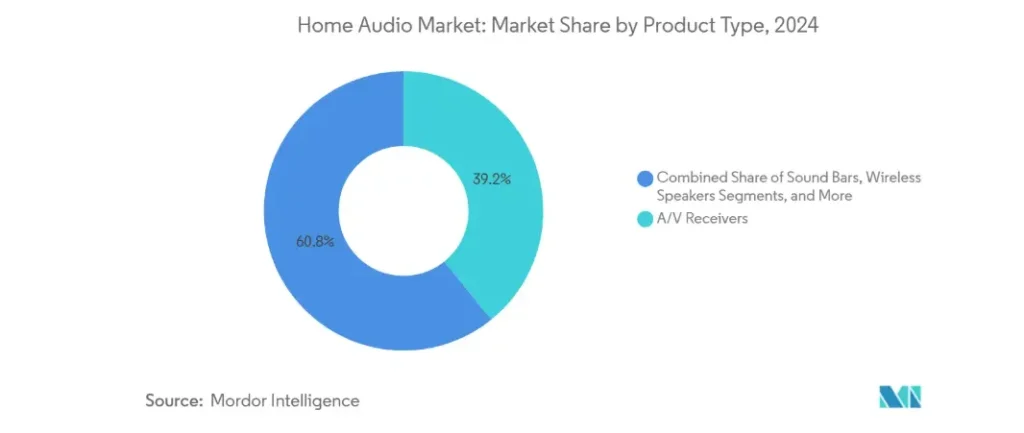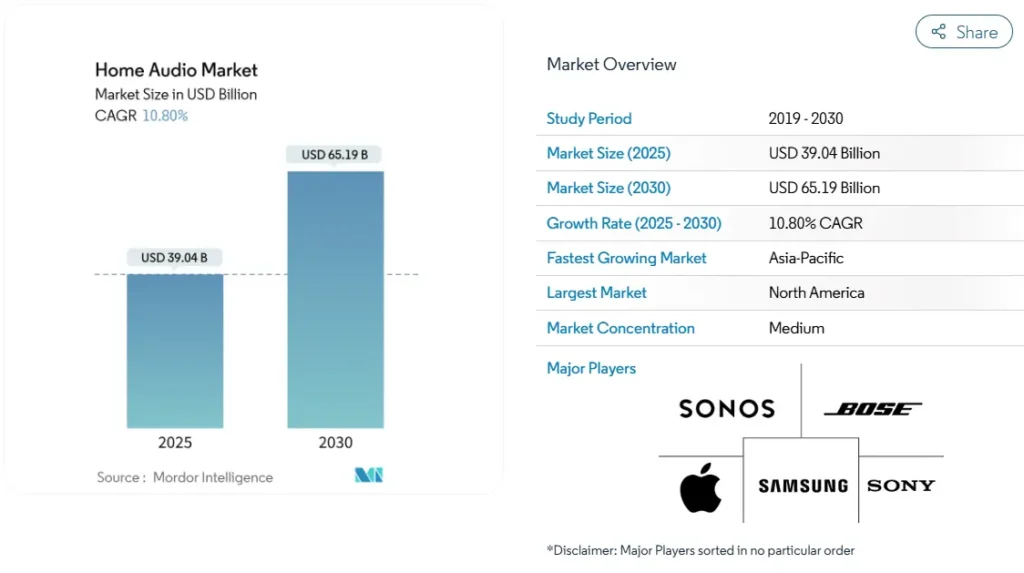Smart audio devices are changing how people enjoy music, films, and even daily routines. From playlists to gaming, these systems mix convenience, personalization, and clear sound. They also fit naturally into smart homes, so one voice command can do more than just adjust volume.
With features like room calibration, spatial formats, and AI assistants, the listening experience feels smoother and more engaging.
Key Takeaways
- Smart audio devices bring adaptive sound, voice control, and smooth integration with smart home platforms.
- AI upgrades such as Apple Intelligence are reshaping how users interact with devices.
- Multi room audio, lossless formats, and spatial sound add depth and immersion.
- Privacy and security settings matter as much as sound quality (Consumer Reports).
Why Smart Audio Devices Matter Today

Speakers today do more than play music. They learn habits, adjust sound automatically, and support formats like Dolby Atmos and FLAC that used to be studio-only. Dolby notes that Atmos is spreading across consumer gear, not just high-end systems.
For casual listeners, convenience stands out first. For audiophiles, it is the sound quality. That mix explains their growing popularity.
Smart Audio Devices in Modern Smart Homes
Smart speakers often sit at the center of connected homes. Linked with Google Home, Alexa, or Apple HomeKit, they let you control lights, temperature, and music together. For those designing immersive entertainment spaces or home studios, neon signs can add a stylish, personalized touch that complements the tech setup.
When setting up voice control, many wonder how to get Apple Intelligence working across devices. Apple explains how to enable it, though features vary depending on the model and OS.
Benefits of Smart Audio Devices in Daily Life
One obvious benefit is convenience. Saying “Hey Siri, play jazz” while cooking or asking Alexa to lower the volume feels quicker than fumbling with a remote.
These devices also adapt to space. In a small apartment, bass can feel heavy until calibration tones it down. In a bigger room, the same speaker might sound fuller. Many listeners add upgrades. Our list of the best audio accessories shows which headphones and DACs pair well with smart setups.
Multi room playback is another highlight. Music can follow you around, so it feels like the house itself is playing the soundtrack. Spatial audio adds depth to films and games, though the effect depends on the device.
Integration makes it more complete. A single “movie mode” command can dim lights, switch on the TV, and fire up the speakers.
Common Challenges and Solutions
These devices are not flawless. Siri may mishear commands if predictive text is off. Apple Support explains how to enable it under Settings > General > Keyboard.
Alarms may fail when songs are only in the cloud. Downloading tracks locally usually solves it. Weak Wi Fi can also cause playback drops, so moving speakers closer to the router helps.
Advanced Features Improving Sound
Smart speakers now include tools once limited to pro setups. They tune themselves, sync across rooms, and support formats designed for high quality playback.
Key Features of Smart Audio Devices
| Feature | What it Does | Real-World Example | User Benefit |
| Room Calibration | Adjusts sound to the space | Sonos Trueplay | Balanced sound in any room |
| Multi Room Sync | Plays audio across speakers | Apple HomePod + HomeKit | Music follows you room to room |
| High Resolution Audio | Supports FLAC, ALAC, lossless | Dolby Atmos devices | Richer, detailed playback |
| Voice Control & AI | Hands-free commands | Siri, Alexa, Google Assistant | Simple control without remotes |
Sonos explains that Trueplay uses microphones to measure acoustics and adjust accordingly. Dolby notes that Atmos is now in mid-range products, including earbuds.
For families, multi room sync is a favorite. A playlist can play across the home, or kids can stream separately while parents listen elsewhere. For those who like to share playlists, there are now apps to listen to music together that make it simple to enjoy tracks with friends even when you are not in the same room.
Security and Privacy
With always-on microphones, privacy matters. Without proper setup, devices might pick up more than you would expect.
Best practices
- Use unique, strong passwords.
- Turn on two factor authentication.
- Keep firmware updated.
- Place devices on a guest Wi Fi network.
- Disable features you do not use.
It is not complicated, but it is worth the effort. Consumer Reports points out that small steps like stronger passwords and updates prevent most issues.
Future Directions for Smart Audio

AI is becoming more predictive. Some speakers already lower volume at night on their own. Apple says its Intelligence features rely on both on-device and private cloud processing, with availability depending on hardware and OS.
Immersive formats are spreading too. Dolby Atmos is now showing up in everyday devices, including earbuds. The quality is not always theater-level, but it is impressive for portable gear.
Compatibility is improving. Mixing brands once meant juggling apps. Newer devices work together more smoothly. Hotels are even adding Chromecast for hospitality so guests can stream their own playlists.
Conclusion
Smart audio devices bring sound quality and smart controls together. They simplify routines, adapt to spaces, and make entertainment more immersive.
Security settings remain important, but the direction is clear: with AI, spatial audio, and better compatibility, these devices will keep reshaping how we listen.
FAQs
1) Can Smart Audio Devices Work Without Internet?
Yes. Bluetooth playback works offline, but streaming and voice assistants need a network.
2) Are Smart Audio Devices Safe for Kids?
They can be, especially when parental controls are enabled and microphone access is limited.
3) Do Audio Devices Use Much Power?
Most are energy efficient and draw little electricity in standby.
4) Which Brands Lead the Market?
Apple, Sonos, Bose, and Amazon are key players. TechRadar regularly compares their strengths



